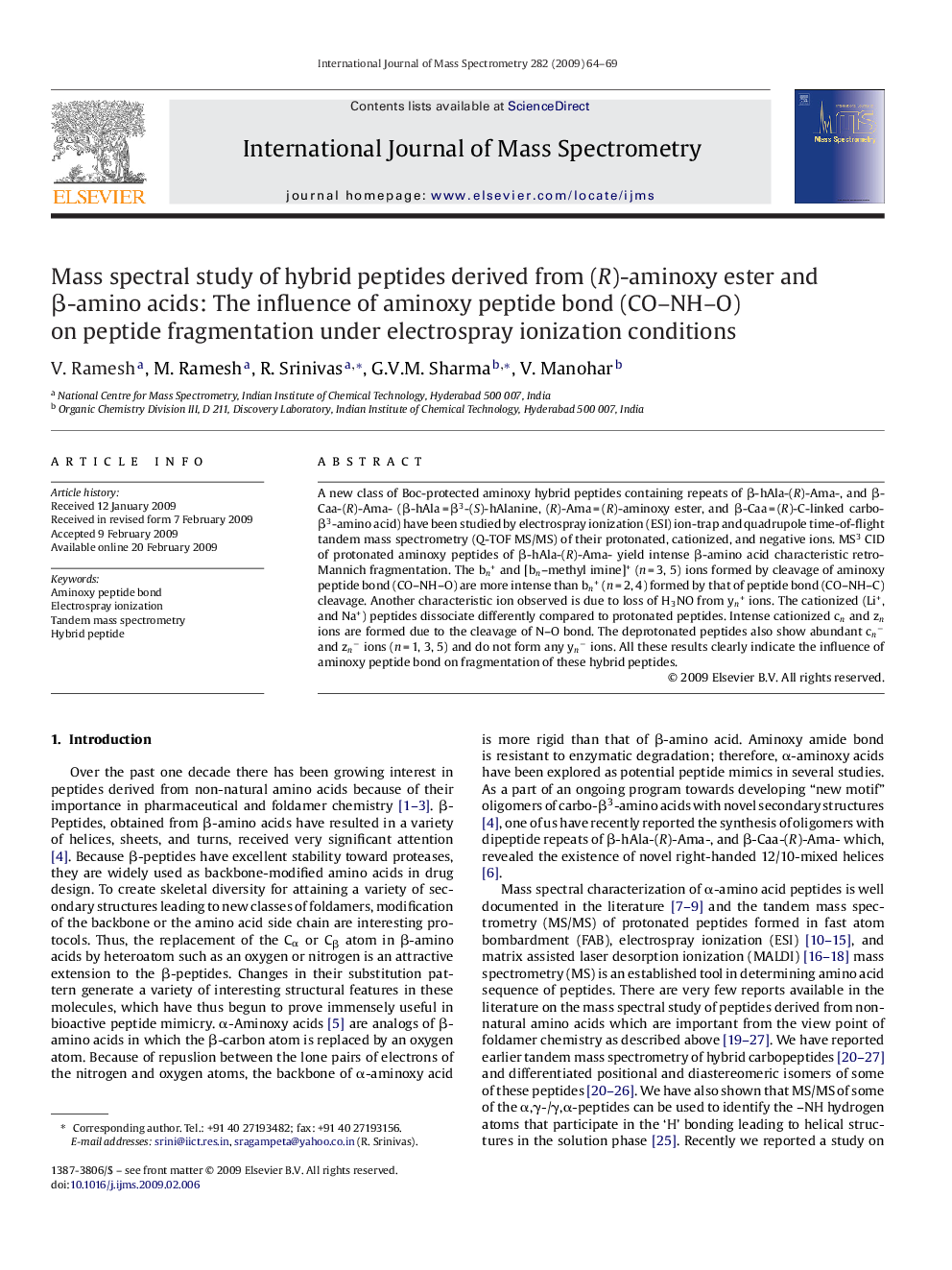| Article ID | Journal | Published Year | Pages | File Type |
|---|---|---|---|---|
| 1193706 | International Journal of Mass Spectrometry | 2009 | 6 Pages |
A new class of Boc-protected aminoxy hybrid peptides containing repeats of β-hAla-(R)-Ama-, and β-Caa-(R)-Ama- (β-hAla = β3-(S)-hAlanine, (R)-Ama = (R)-aminoxy ester, and β-Caa = (R)-C-linked carbo-β3-amino acid) have been studied by electrospray ionization (ESI) ion-trap and quadrupole time-of-flight tandem mass spectrometry (Q-TOF MS/MS) of their protonated, cationized, and negative ions. MS3 CID of protonated aminoxy peptides of β-hAla-(R)-Ama- yield intense β-amino acid characteristic retro-Mannich fragmentation. The bn+ and [bn–methyl imine]+ (n = 3, 5) ions formed by cleavage of aminoxy peptide bond (CO–NH–O) are more intense than bn+ (n = 2, 4) formed by that of peptide bond (CO–NH–C) cleavage. Another characteristic ion observed is due to loss of H3NO from yn+ ions. The cationized (Li+, and Na+) peptides dissociate differently compared to protonated peptides. Intense cationized cn and zn ions are formed due to the cleavage of N–O bond. The deprotonated peptides also show abundant cn− and zn− ions (n = 1, 3, 5) and do not form any yn− ions. All these results clearly indicate the influence of aminoxy peptide bond on fragmentation of these hybrid peptides.
Graphical abstractInfluence of aminoxy peptide bond (CO–NH–O) on fragmentation of some Boc-protected aminoxy hybrid peptides have been studied by electrospray ionization tandem mass spectrometry of their protonated, cationized, and negative ions.Figure optionsDownload full-size imageDownload as PowerPoint slide
